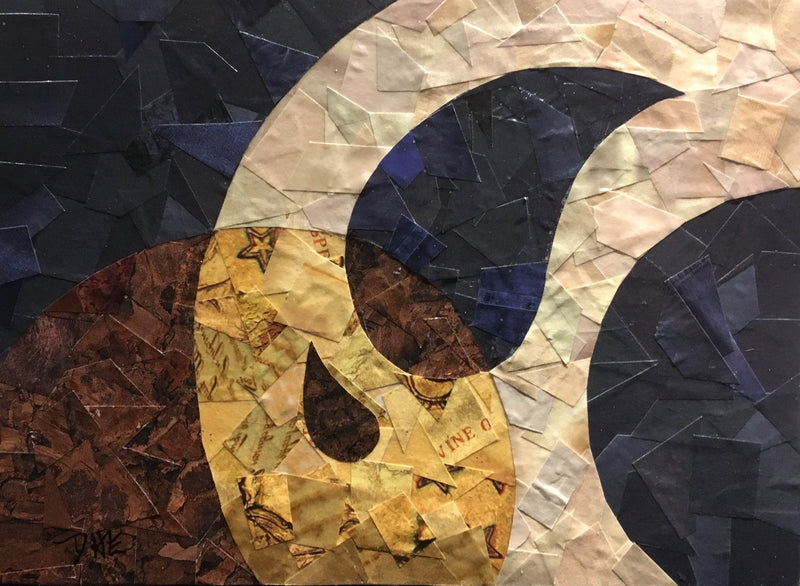
Deborah Eater
Bio
Initially trained as an experimental psychologist, Deborah Eater taught at the College of New Jersey and worked for the NJ Department of Higher Education. During that time her creative drive found expression artistic crafts such as rug making, lace knitting, spinning and other fiber arts. Her craft expertise helped her secure a position teaching art and during that time her interest in fine art grew. When the school closed in 2010, she commenced at age 50 to study drawing and painting at Fleisher Art Memorial in Philadelphia.
Eater began to develop her signature style of collage toward the end of her artistic crafts period, returning to it with renewed enthusiasm after her training at Fleisher. She clips images from periodicals and advertising catalogs, de-acidifies them, and cuts them into tiny pieces. Using each piece as a brushstroke, she creates a palette of piles of clippings and “paints” images on canvas or board. A small (8” x 10”) work contains hundreds of hand-cut and individually pasted pieces.
In recent years, Eater has had solo exhibitions in assorted venues across Pennsylvania and New Jersey Her work has won prizes from Stover Mill Gallery, Erwinna, PA, Riverfront Renaissance Center for the Arts, Millville, NJ, and the National Collage Society. Her collages have been included juried exhibitions by organizations throughout the region She has given presentations at Michener Museum, Doylestown, PA, the Grundy Museum, Bristol, PA, and the Ogden Museum in New Orleans, LA, as part of KolajFest New Orleans.
A native of Pittsburgh, Pennsylvania, Deborah Eater currently resides in lower Bucks County. She has a studio in Langhorne, PA, where she teaches drawing, mixed media, and collage. She is a member of the Arts and Cultural Council of Bucks County, the Artists of Bristol, Philadelphia CollageWorks, and a signature member of the National Collage Society.
Artist Statement
My compositions are driven by a love of fluid lines: the meandering course of a stream, the convoluted design of a complex series of highway ramps, the curve of a stair rail, the silhouette of a tree canopy. Rather than representing objects directly, I try to create images that have an echo of the line that inspired me and its emotional impact, but are open to other interpretations.
Out of a seemingly infinite number of sources of paper for creating collage, I find myself especially drawn toward magazine and catalog clippings. Clothing images are particularly useful, because they usually involve some texture or pattern and display subtle changes in value and temperature across a sample.The pages I cut are thin enough to let me work in multiple layers as I adjust shading or soften transitions by adding additional pieces. I also have the satisfaction of knowing that I'm recycling as I work.

Please wait, it may take sometime ...
1-Always Use "Landscape" mode Layout in print settings.
2-Use default margins.

Deborah Eater
My compositions are driven by a love of fluid lines: the meandering course of a stream, the convoluted design of a complex series of highway ramps, the curve of a stair rail, the silhouette of a tree canopy. Rather than representing objects directly, I try to create images that have an echo of the line that inspired me and its emotional impact, but are open to other interpretations.
Out of a seemingly infinite number of sources of paper for creating collage, I find myself especially drawn toward magazine and catalog clippings. Clothing images are particularly useful, because they usually involve some texture or pattern and display subtle changes in value and temperature across a sample.The pages I cut are thin enough to let me work in multiple layers as I adjust shading or soften transitions by adding additional pieces. I also have the satisfaction of knowing that I'm recycling as I work.






